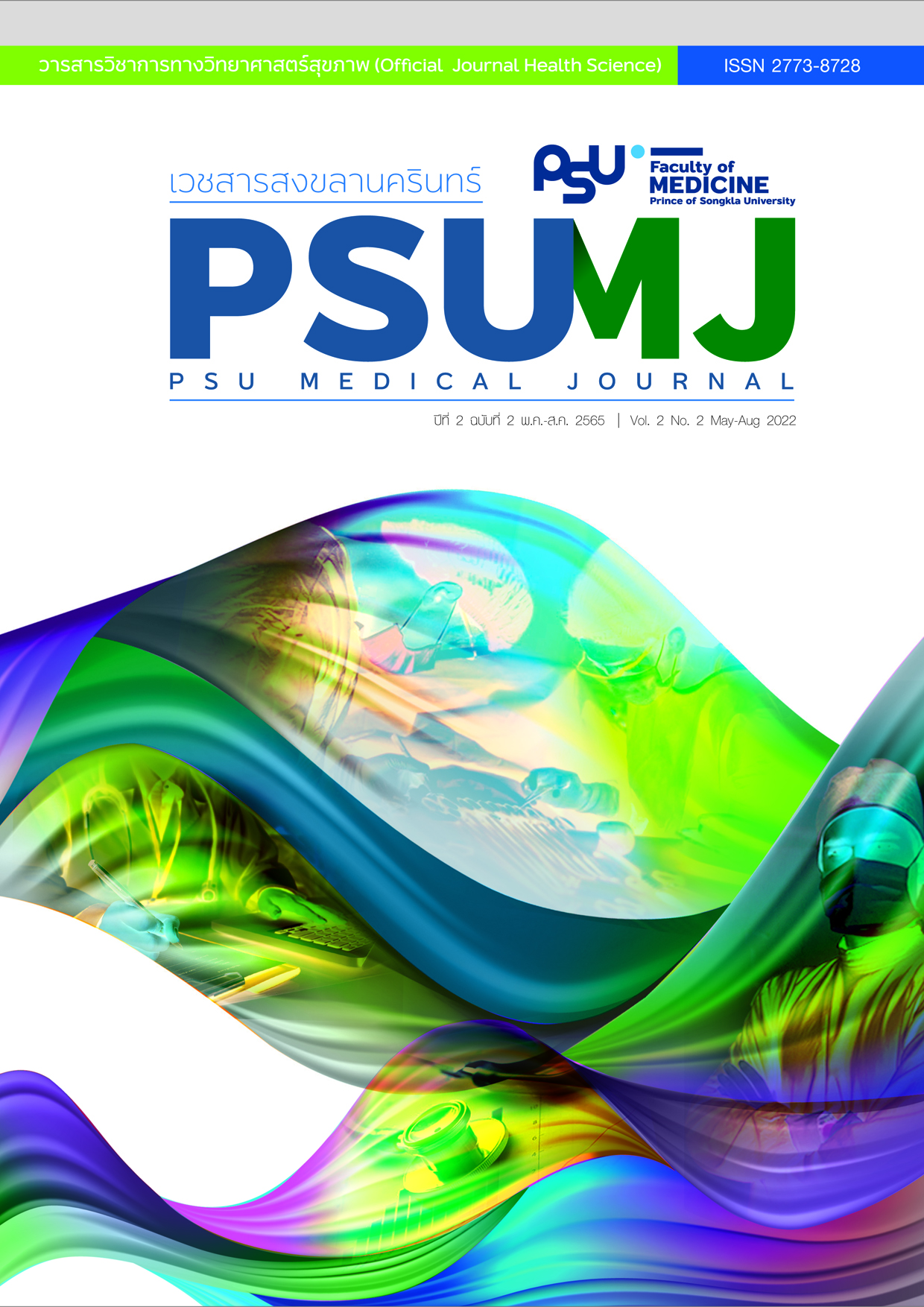Neurological Outcome and Associated Injuries In Near-Hanging Patients: A 10-Year Songklanagarind Hospital Experience
Neurological Outcome and Associated Injuries in Near-Hanging Patients
DOI:
https://doi.org/10.31584/psumj.2022247338Keywords:
brain injury, near-hanging injury, outcomesAbstract
Objective: Death and injury from attempted hanging is common in Thailand. To date, few studies that have collected and analyzed treatment outcomes following near-hanging in this country. This study was conducted to examine factors associated with treatment outcomes in near-hanging injury patients.
Material and Methods: The records of all near-hanging injury patients who visited Songklanagarind Hospital between 2009 and 2018 were reviewed. Data collected and analyzed included patient characteristics, imaging, and neurological outcomes from their arrival at the emergency department to their last follow-up or death. The treatment outcomes were classified into favorable and unfavorable outcomes.
Results: Twenty-one cases were included in the study and the median age was 36 years. Of the 21 cases, 13 cases were categorized as incomplete hanging, seven were complete hanging and one had no recorded type of hanging. Six of the patients died, four at the emergency department and two after being hospitalized. Fourteen patients had favorable outcomes, the patients in this group had higher systolic blood pressure, oxygen saturation, and Glasgow Coma Scale Score on admission.
Conclusion: Near-hanging injury patients had a high mortality rate. The factors associated with unfavorable outcomes were history of cardiac arrest before hospitalization, initial Glasgow Coma Scale Score, systolic blood pressure, and oxygen saturation on admission.
References
Rayes M, Mittal M, Rengachary SS, Mittal S. Hangman’s fracture: a historical and biomechanical perspective. J Neurosurg Spine 2011;14:208-198.
Salim A, Martin M, Sangthong B, Brown C, Rhee P, Demetriades D. Near-hanging injuries: a 10-year experience. Injury 2006;37:435-9.
Martin MJ, Weng J, Demetriades D, Salim A. Patterns of injury and functional outcome after hanging: analysis of the National Trauma Data Bank. Am J Surg 2005;190:836-40.
D’Sa SR, Nair S, Joe Philip V, Reji KK, Karuppusamy R, Joseph M. Study of the factors at admission predicting the outcome in patients with attempted suicidal hanging. Trop Doct 2018;48:3-6.
Matsuyama T, Okuchi K, Seki T, Murao Y. Prognostic factors in hanging injuries. Am J Emerg Med 2004;22:207-10.
Sauvageau A. About strangulation and hanging: language matters. J Emerg Trauma Shock 2011;4:320.
Teasdale GM, Pettigrew LE, Wilson JT, Murray G, Jennett B. Analyzing outcome of treatment of severe head injury: a review and update on advancing the use of the Glasgow Outcome Scale. J Neurotrauma 1998;15:587-97.
Geocadin RG, Callaway CW, Fink EL, Golan E, Greer DM, Ko NU, et al. Standards for studies of neurological prognostication in comatose survivors of cardiac arrest: a scientific statement from the american heart association. Circulation 2019;140:e517– 42.
Downloads
Published
How to Cite
Issue
Section
License
Copyright (c) 2022 Author and Journal

This work is licensed under a Creative Commons Attribution-NonCommercial-NoDerivatives 4.0 International License.








